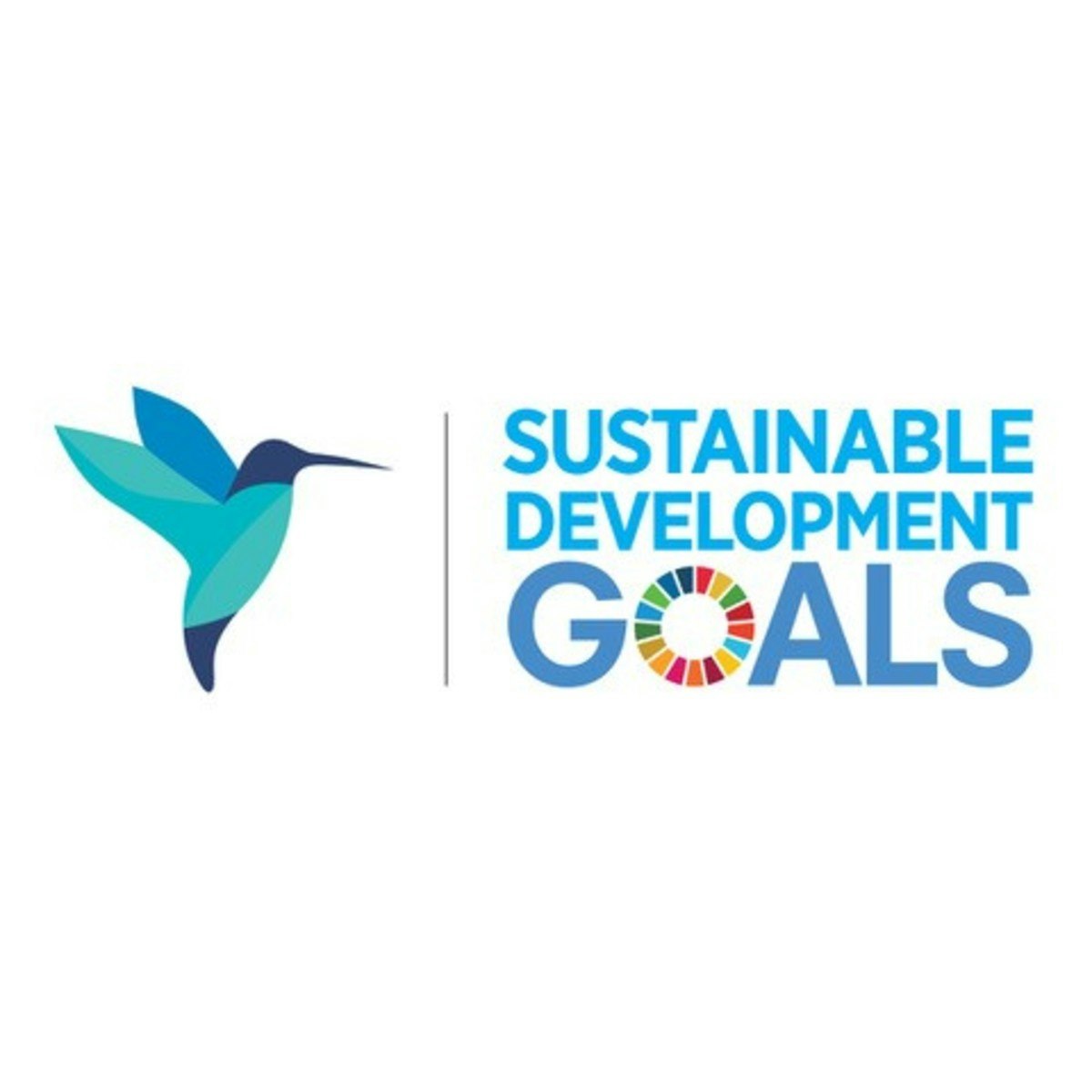World economy: online courses
This page provides an overview of massive open online courses (MOOCs) on world economy, international finance and trade, the activities of international economic organizations.
What is a massive open online course, you can read here.
Business Opportunities and Risks in a Globalized Economy

Using the example of the world's leading economies, this course teaches to analyze economic indicators (macroeconomic, institutional, international) and, on the basis of this data, determine the risks and opportunities of doing business in these countries.
Duration: 5 weeks, 2–3 hours/week.
Language: English; subtitles available in Russian.
Provider: IE Business School; Coursera.
Course syllabus:
1. The USA: GDP, inflation and unemployment; growth and gaps: reviewing the basic relationships.
2. Japan: current accounts and currencies, international economics relationships.
3. The European integration experiment: the benefits of trade and migration.
4. India and China: economic development, how it occurs, and the world's upcoming giants.
5. Capstone.
Other courses in the series: “Understanding economic policymaking”, “Trade, Immigration and Exchange Rates in a Globalized World”.
Driving business towards the Sustainable Development Goals.

In 2015 the United Nations adopted the 2030 Agenda for Sustainable Development. This agenda includes 17 Sustainable Development Goals (SDGs) that target the big challenges such as how to eliminate poverty, how to protect the environment and how to bring about peace. Every member state committed to achieving these goals by 2030.
After completing this course you will:
• know what the SDGs are, why they are important and how each individual can be an agent for positive change in the world;
• understand the role of business in the transition to sustainable development to create a prosperous future for all;
• be able to identify interconnectedness of the SDGs and the challenges behind solving them;
• know how management insights can contribute to the SDGs;
• be able to evaluate the effectiveness of current business strategies in contributing to the SDGs;
• develop a positive, critical, aware and courageous attitude towards the SDGs.
Course syllabus:
1. Introduction to the Sustainable Development Goals
2. The Biosphere
3. Society I
4. Society II
5. Economy
6. Partnerships
7. System thinking
Duration: near 17 hours.
Language: English; subtitles available in Russian.
Provider: Erasmus University Rotterdam; Coursera.
The course analyses the current problems of the world economy in the context of the planet as a whole.

Duration: 6 weeks, 2–4 hours/week.
Language: English; subtitles available in Russian.
Provider: Erasmus University Rotterdam; Coursera.
Course syllabus:
1. Earth economics: a new and necessary approach.
2. Accounting for fluctuations in the Earth economy.
3. Investment and saving.
4. Government and the Earth economy.
5. Money and Earth economic equilibrium.
6. Long run challenges.
Financial Development and Financial Inclusion

The course participants will consider how to make the financial sector of the economy stable and efficient, as well as how to ensure the availability of financial services for all segments of society regardless of income level.
Language: 7 weeks, 8–10 hours/week.
Language: English.
Provider: International Monetary Fund; edX.
Course syllabus:
1. Framework for financial development and financial inclusion (FDFI).
2. Measuring FDFI.
3. Banks and capital market development.
4–5. SME finance.
6. Promoting financial inclusion for households.
7. FinTech and regulatory implications.

This course is designed to provide macroeconomists with an introduction to the fundamentals of finance: characteristics and pricing of basic financial instruments; the measurement of returns; the term structure of interest rates; portfolio allocation and diversification; and the basics of risk management.
Language: 7 weeks, 8–10 hours/week.
Language: English.
Provider: International Monetary Fund; edX.
Course syllabus:
1. Pricing money market instruments.
2. Bond pricing.
3. Sensitivity of bond prices.
4. Term structure of interest rates.
5. Equity pricing.
6. Asset allocation and diversification.
7. Introduction to risk management and value-at-risk.
Financial Programming and Policies, part 1: Macroeconomic Accounts and Analysis

The course presents the principal features of the four main sectors that comprise the macroeconomy (real, fiscal, external, and monetary); demonstrates how to read, interpret, and analyze the accounts for these sectors; and illustrates how these sectors are interlinked.
Language: 6 weeks, 8–10 hours/week.
Language: English.
Provider: International Monetary Fund; edX.
Course syllabus:
1. Real sector.
2. External sector.
3. Government sector.
4. Monetary and financial sector accounts.
5. Interrelations.
Financial Programming and Policies, part 2: Program Design

Course participants will learn how to forecast macroeconomic accounts and design an economic program for a case study country.
Language: 7 weeks, 6–8 hours/week.
Language: English.
Provider: International Monetary Fund; edX.
Course syllabus:
1. What is financial programming?
2. Introducing the case of Macronia.
3. Forecasting the real sector and inflation.
4. Forecasting the external sector.
5. Forecasting the government sector.
6. Forecasting the monetary sector.
7. Making a consistent baseline scenario.
8. Assessing a baseline scenario.
9. Previewing adjustment strategies.
10. Making a consistent program scenario.
Foundations of Central Bank Law

The course introduces the legal underpinnings of the mandate, decision-making structures, autonomy, accountability, transparency, and operations of central banks.
Language: 6 weeks, 2–6 hours/week.
Language: English.
Provider: International Monetary Fund; edX.
Course syllabus:
1. Legal establishment, nature, and ownership of central banks.
2. Central bank mandates.
3. Decision-making structures of central banks.
4. Autonomy, accountability, and transparency of central banks.
5. Monetary and exchange rate policy.
6. Lender of last resort and other crisis management functions.
7. Macroprudential oversight.
8. The banker to the state.
9. Currency and payment systems.

The causes, events, policy responses, and aftermath of the recent global financial crisis are investigated.
Language: 11 weeks, 4–6 hours/week.
Language: English; subtitles available in Russian.
Yale University; Coursera.
Course syllabus:
1. Introduction to the global financial crisis. The common causes of financial crises.
2. Housing and mortgages.
3. Safe assets and the global savings glut.
4. The housing crisis.
5–6. Anxiety.
7. Panic.
8. Our responses to the crisis.
9. Responding to future crises.
10. Europe in the global financial crisis.
11. The Eurozone crisis.
Global Strategy I: How the Global Economy Works

The course helps to understand the forces of globalization and how cross-cultural management and the relationship of a multinational organization to various host countries are becoming more and more critical in today’s global economy.
Language: 4 weeks, 4 hours/week.
Language: English; subtitles available in Russian.
Provider: University of Illinois at Urbana-Champaign; Coursera.
Course syllabus:
1. How did we get here? Why does it matter? The three stages of globalization, characteristics of the current globalization.
2. The big disappointment: the world did not converge. Cultural, administrative, economic differences.
3. Why we trade and how we do it.
4. Why do we have multinationals? What determines the type of multinational?
Global Strategy II: Doing Business in the Global Economy

This course explores the ways firms overcome challenges when operating globally.
Language: 4 weeks, 4 hours/week.
Language: English; subtitles available in Russian.
Provider: University of Illinois at Urbana-Champaign; Coursera.
Course syllabus:
1. How should firms operate globally? What determines their global strategy?
2. Entering global markets: aggressively? cautiously? big? small?
3. Entry strategies of multinational corporations.
4. How do multinationals strategize in an increasingly complex political environment?
Global Trends for Business and Society

The course teaches to analyze rapidly changing global trends, their effects on consumer and labour markets, financial systems, and geopolitical relationships among countries all over the world.
Language: 4 weeks, 12 hours/week.
Language: English; subtitles available in Russian.
Provider: The University of Pennsylvania; Coursera.
Course syllabus:
1. People and markets around the world.
2. Money around the world.
3. Global economic and financial imbalances.
4. The shifting geopolitical landscape.
International Business, part I

This course provides an understanding of the socioeconomic, political, cultural, and linguistic environment in which international businesses operate.
Language: 6 weeks, 3–6 hours/week.
Languages: English; subtitles available in Russian.
Provider: University of New Mexico; Coursera.
Course syllabus:
1. What is globalization?
2. Is globalization new?
3. How do political and social institutions impact national economic development?
4. What is the role of culture?
5. What are the gains from trade?
6. Free trade, free-r trade or managed trade?
International Business, part II

This course focuses on starting, growing, and managing businesses in international environment content.
Language: 6 weeks, 3–6 hours/week.
Languages: English; subtitles available in Russian.
Provider: University of New Mexico; Coursera.
Course syllabus:
1. What are foreign currencies and how are exchange rates determined?
2. How should you organize your business abroad?
3. How do you adapt your product or service for the international market?
4. What is it like to work abroad and how do you manage expatriates?
5. How to start, operate and grow a small or entrepreneurial business in the global environment?
6. What is the current state of the global business environment?
International Organizations Management

This course provides an introduction to International Organizations and the United Nations, and explores how business and management tools can be applied in these settings to achieve better, more effective results. With a focus on cross-sector partnerships in a changing world, the course offers you insights into the inner workings of international organizations and the challenges they face today. It will introduce you to effective, state-of-the art management tools and principles to help you lead change in this world – taught by senior staff of international organizations themselves.
This is an introductory course offered by the International Organizations MBA (IO-MBA) of the University of Geneva, an executive program for change-makers in international organizations, NGOs and social ventures.
Course syllabus:
1. Welcome to the Course
2. Introduction to International Organizations
3. The Shifting Context for International Organizations
4. Leadership in the UN System
5. Public Private Partnerships
6. Marketing & Fundraising
Duration: near 17 hours.
Language: English; subtitles available in Russian.
Provider: University of Geneva; Coursera.

This course takes a look at the basic theories of international trade and the consequences of trade in today’s global economy.
Language: 6 hours, 60 videos.
Language: English.
Provider: George Mason University; MRUniversity.
Course syllabus:
1. Introduction to international trade.
2. International trade and trade restrictions.
3. International trade and the firm.
4. International trade and the factors of production.
5. Consequences of international trade.
6. Exam.

Participants of this macroeconomics course will learn to predict macroeconomic variables (inflation, economic growth, consumption), and to create and use statistical models for forecasting and analyzing economic policy.
Language: 9 weeks, 8–10 hours/week.
Language: English.
Provider: International Monetary Fund; edX.
Course syllabus:
1. EViews basics.
2. Introduction to forecasting with EViews.
3. Statistical properties of time series data.
4. Forecast uncertainty and model evaluation.
5. Vector autoregressions (VARs).
6. Cointegration and vector error corrections models (VECMs).
7. Evaluating regression models.

The course teaches to use practical tools of macroeconomic analysis for assessing the current macroeconomic situation in a country.
Duration: 6 weeks, 6–8 hours/week.
Language: English.
Provider: International Monetary Fund; edX.
Course syllabus:
1. Supply and productivity.
2. Potential output and output gaps.
3. Analyzing aggregate demand.
4. Analyzing inflation.
5. Analyzing monetary policy.
6. Macrofinancial linkages.
7. Fiscal policy.
8. Fiscal sustainability.
9. The external position.
10. The real exchange rate and competitiveness.
11. External sustainability and external vulnerability.
12. Risks and vulnerabilities.
Macroeconomics for a Sustainable Planet

The course will introduce you to traditional macroeconomic principles and tools and their applications in the age of sustainable development and the wave of globalization.
Language: 13 weeks, 2–4 hours/week.
Language: English; subtitles available in Russian.
Provider: SDG Academy; edX.
Course syllabus:
1. Introduction to Macroeconomics.
2–3. Output determination and employment.
4. Labour markets.
5. Money and central banking.
6. Exchange rate themes.
7. Financial markets and financial crises.
8. Inflation, unemployment and stabilization.
9. Consumption, saving and investment.
10. Fiscal policy and institutions.
11. Open economy issues.
12. Economic growth.
13. Globalization.
Management of International Development: Towards Agenda 2030

This course introduces a concept of international development. The course examines the current international development architecture, its key actors and trends. The course illustrates the main international organizations' governance systems, as well as their tools for financing sustainable development.
Duration: 4 weeks, 2 hours/week.
Language: English.
Provider: Bocconi University; Coursera.
Course syllabus:
1. Introducing international development: goals, actors and trends.
2. Governance in international development.
3. Funding and financing for international development.
4. Managing international organizations’ human capital.

This course covers theoretical and practical aspects in the compilation of national accounts statistics based on the conceptual framework of the System of National Accounts 2008 (2008 SNA).
Duration: 6 weeks, 4–6 hours/week.
Language: English.
Provider: International Monetary Fund; edX.
Course syllabus:
1. Structure of the SNA.
2. SNA building blocks.
3. Compiling GDP: production approach.
4. Compiling GDP: expenditure approach.
5. Compiling GDP: income approach.
6. Price and volume measures.
Political Economy of Institutions and Development

Course participants will consider how politics and economics are interconnected, what makes some countries wealthier than others, what role international organizations play in the world economy.
Language: 11 weeks, 2–4 hours/week.
Language: English; subtitles available in Russian.
Provider: Leiden University; Coursera.
Course syllabus:
1. Introduction.
2. Data used in political economy.
3. Trust.
4. Society and fragmentation.
5. Governance.
6. Economic development.
7. Globalization.
8. International organizations.
9. Non governmental actors.
10. Final exam.
11. Extra material.
Principles of Sustainable Finance

The course explains how finance can speed up the transition to a sustainable economy. It analyses the Sustainable Development Goals as a strategy for a better world and explains why environmental, social and governance factors matter in the corporate and financial sectors.
Duration: 9 weeks, 1–2 hours/week.
Language: English; subtitles available in Russian.
Provider: Erasmus University Rotterdam; Coursera.
Course syllabus:
1. The sustainability challenge.
2. Dealing with sustainability challenges.
3. The purpose of companies.
4. Sustainable business models.
5. Sustainable asset management.
6. Sustainable banking.
7. Climate risk and insurance.
8. Steering the transition.
9. Take-aways: what can you do?
SDG: Moving Towards Sustainable Work

The course explores the United Nations' Sustainable Development Goals and mechanisms for developing decent and sustainable work.
Language: 5 weeks, 2–3 hours/week.
Language: English.
Provider: Charles III University of Madrid; edX.
Course syllabus:
1–2. New challenges for decent work. Digital economy. The impact of robot revolution on employment.
3. Diversity management.
4. Decent work and protection against poverty.
5. New forms of works, well-being and work health.
The Sustainable Development Goals – A Global, Transdisciplinary Vision for the Future

The course offers a historical overview of how sustainability has been understood, as well as a thorough introduction to the Sustainable Development Goals (SDGs) adopted by the United Nations in 2015.
Language: 3 weeks, 2–4 hours/week.
Language: English; subtitles available in Russian.
Provider: University of Copenhagen; Coursera.
Course syllabus:
1. Sustainable Development as a Global Goal.
2. Managing human impacts on the natural world.
3. Social sustainability and the way forward.
Trade, Immigration and Exchange Rates in a Globalized World

This is the second course of the Globalization, Economic Growth and Stability series. This course will focus on facets of globalization that affect a country's economic perspectives.
Duration: 5 weeks, 2–3 hours/week.
Language: English; subtitles available in Russian.
Provider: IE Business School; Coursera.
Course syllabus:
1. Exchange rates.
2. Trade.
3. Balance of payments.
4. (Im)migration.
5. Capstone.
Other courses in the series: “Understanding Economic Policymaking”, “Business Opportunities and Risks in a Globalized Economy”.
Transforming Our World: Achieving the Sustainable Development Goals

This course gives an overview of the Sustainable Development Goals (SDGs), adopted in 2015. It helps to understand why they are important and how to achieve them.
Language: 1 week, 2–4 hours.
Language: English; subtitles available in Russian.
Provider: SDG Academy; edX.
Course syllabus:
1. Getting to know the Sustainable Development Goals (SDGs).
2. Sustainable Development Plans.
3. Technology, innovation and the SDGs.
4. Good governance and the SDGs.
5. Business and the SDGs.
6. Universities and the SDGs.
Understanding Economic Policymaking

This course is the first of three courses in the Globalization, Economic Growth and Stability series. Participants will discuss how the government's fiscal and monetary policies influence a country's economy.
Duration: 7 weeks, 3–5 hours/week.
Language: English; subtitles available in Russian.
Provider: IE Business School; Coursera.
Course syllabus:
1. Macroeconomy overview.
2. The fiscal policy tool.
3. Deficits, debts, myths and realities.
4. Monetary policy.
5. Combining policies and other policy tools.
6. Policymaking in the wake of the financial crisis.
7. Capstone.
Other courses in the series: “Trade, Immigration and Exchange Rates in a Globalized World”, “Business Opportunities and Risks in a Globalized Economy”.

